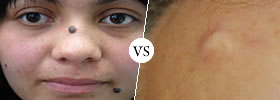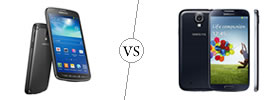Difference between Sunglasses and Spectacles
Key Difference: Sunglasses are eye wear glasses that are used for the protection of the eyes from the bright light and harmful rays of sun, whereas goggles are close fitting eyeglasses that are equipped with side shields. Spectacles refer to a pair of lenses that are set in a frame and are used as an eyewear in order to correct the defective vision.
Sunglasses or spectacles both tend to be valuable appliances. Most of us might be using at least one of them. Still sometimes it may be difficult to bring out the differences between them. Both are quiet similar in structure and design. Both require a pair of lens and a frame to set those lenses. However, both are used for different purposes.
.jpg) Sunglasses are preferred by everyone, they protect our precious eyes form the harmful rays of sun and are also considered to be trend setters. Sunglasses have been highly popular because of their versatile designs. There are numerous designs, numerous colours of lens and even some crazy designs, but in nutshell they are something that one must definitely have in his or her personal collection. These sunglasses are also used to enhance the style, apart from being used as an eye protection gadget.
Sunglasses are preferred by everyone, they protect our precious eyes form the harmful rays of sun and are also considered to be trend setters. Sunglasses have been highly popular because of their versatile designs. There are numerous designs, numerous colours of lens and even some crazy designs, but in nutshell they are something that one must definitely have in his or her personal collection. These sunglasses are also used to enhance the style, apart from being used as an eye protection gadget.
Ultra violet rays emitted by the sun are not good for the eyes and thus eyes need to be protected from these rays. Thus, sunglasses provide the protection from these dangerous rays. These rays can also damage vision by clouding eye lens and burning through the delicate film and cells of our retina. Sunglasses have been devised to protect the eyes from the ultra violet rays. The intense lights can be blocked from reaching to the eyes. It is believed that good sunglasses can block light entering the eyes by as much as 97 percent.
Sunglasses can be polarized or non-polarized. Polarized lenses contain a special filter that helps in reducing the glares and thus improve the comfort and visibility. The light that is reflected back from the flat surface is horizontally polarized and the lens of glares are vertically polarized and thus they are able to block the glare.
Spectacles have been evolved from reading glasses, and these reading glasses are supposed to be appeared in Italy for the first time in the year 1960. These reading glasses were designed to help the elders in reading as due to age their vision had got blurred. This was a boon for mankind and thus got popularized very soon. Today spectacles and reading glasses are often used interchangeably, however eyeglasses used to denote the eyewear with no side bars whereas spectacles referred to frames with sidebars. The lens of spectacles are made from a solid material like glass or plastic. The lens should be transparent and should be capable of bending or refracting the light.
The specs work on simple logic: - lens diverges or converge the rays of light and it does that to a sufficient degree to allow the eye to get the perfect vision.
Three types of lenses can be described in context to spectacles:-
Convex lens: - used for the correction of problem in long sight.
Concave lens: - used for the correction of problem in short sight.
Cylindrical lens: - used for the correction of astigmatism caused due to imperfection in the curvature of cornea.
Therefore, sunglasses and specs are very different to each other. Sunglasses are used to protect the eyes from rays of sun or intense light, whereas spectacles are used to correct the defective vision. Another important difference between them is that- unlike lenses of spectacles, all sunglass lenses are tinted. This tint helps to cut down the brightness.
|
|
Sunglasses |
Spectacles |
|
Definition |
Eye wear for protection from bright light and sun rays |
Eye wear for correction of defect in vision |
|
Lens Material |
Glass, acrylic, polycarbonate, CR-39 or polyurethane |
plastic , glass, polycarbonate, trivex, high-index plastic, Aspheric, etc |
|
Other names |
Shades, solar shields, sun spectacles, etc |
Reading glasses, glasses, specs, etc |
|
Lens Type |
Prescription or non-prescription lenses. photochromic lenses, which are photosensitive, darken when struck by UV light. |
Concave, convex and cylindrical Not |
|
Purpose |
Eye protection as well as esthetic |
Necessity for clear vision |
Image Courtesy: eyewearking.com, ergonomics.hubpages.com









Add new comment